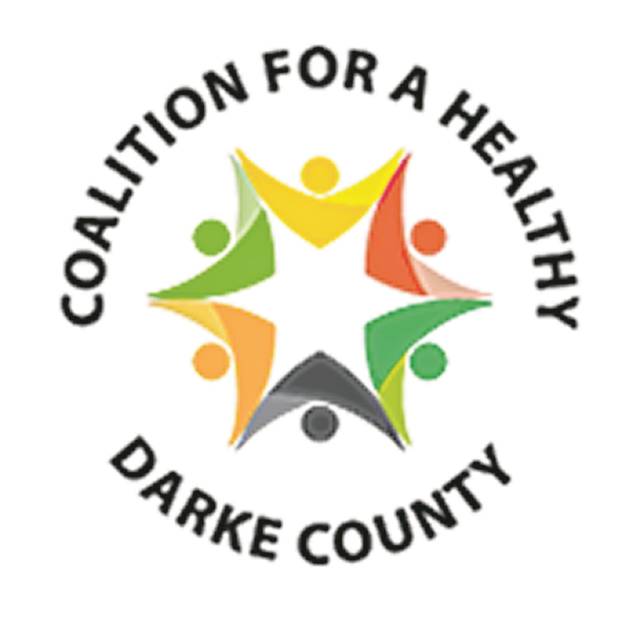
GREENVILLE — The opioid epidemic is a broad-reaching issue that has devastating effects on individuals, families, and their communities across the United States, including ours. The Coalition for a Healthy Darke County has taken significant steps toward reducing its effects over the last few years.
However, in October 2019, the Coalition was approached by representatives at Ohio State University in what may be a game-changer, to participate in a ground-breaking HEALing Community Study (HCS) to Help to End Addiction Long-term (HEAL).
According to information provided by OSU, the study is a National Institute of Health (NIH) funded project with a committed $16.5 million per year for the next three years. Those funds allocated to 67 counties in four states: Kentucky, Massachusetts, New York, and Ohio.
“It is a different kind of project because it really has a primary mechanism of community engagement,” explained Dr. Pam Salsberry, Community Engagement Core Co-Lead. The idea to work with and support communities to put into place interventions that will “reduce overdose deaths” by 40 percent in three years across the entire study area.
The key is to create not a one-size-fits-all solution but a menu of options for communities to choose from, the options driven by community-engaged interventions developed from a comprehensive, data-driven community response plan with evidence-based practices or EBPs.
First wave counties such as Darke County will act as a guide to assist other communities to “show others how to go to the next level,” explained Amy Farmer M.A. Community Engagement Coordinator for the HCS.
Farmer’s position as a community engagement coordinator is one of several to play a significant part in the study. Other positions include a community data coordinator and intervention facilitator for data collection provided in thanks to the allocated funds.
The funds, ranging from $800,000 to $900,000, allows coalitions to obtain the necessary resources for their community, whether it is meeting technical needs such as databases or to provide educational workshops, even purchase items, to name but a few.
Dr. Salsberry, also Professor and Associate Dean Outreach and Engagement College of Public Health at OSU, stated while chosen randomly, certain community criteria had to be met — nonadjacent to one another, the extent of the problem, and also death rate percentages. She noted it was fortunate Darke County was chosen given the work the Coalition has already done and continues to do.
A focus area in this study will also include the stigma surrounding substance abuse disorders. Something Salsberry states is recognized nationally as one of the barriers to opioid death reduction.
“[It’s] not because we don’t know how to reduce deaths,” said Salsberry but barriers to resources due to stigma that prohibits some communities from adopting EBPs, for example, a needle-exchange program or NARCAN availability.
“There’s always the stigma that it is always the bad people,” added Dr. Laurie White, Director of Counseling and Behavioral Health with Family Health and member of the Coalition. “However, what we have found in just our efforts, it affects all levels of people and all ages.”
Dr. Tim Kathman, Darke County Coroner, and VP Medical Affairs for Wayne HealthCare and also a Coalition member stated similarly. He shared he still encounters those who have a harsh attitude towards addicts and that the cure for the belief that the “best addict is a dead addict” is education and sometimes personal experience.
“Someone close to you, someone that you love and care for that gets involved in or is touched by substance or alcohol abuse disorder. That tends to change people’s attitudes,” said Kathman. “More and more families and more and more individuals are being personally touched by it.”
The stigma is something the Coalition for a Healthy Darke County has been aware of since their founding in 2014 after a growing number of people were not able to pass drug screenings for employment.
It was six years ago that nearly 60 community stakeholders participated in a strategic planning meeting to create a comprehensive strategic plan to combat substance abuse in the county.
Since then, “We’ve learned about compassion, we’ve learned about stigma, we’ve learned that addiction is a disease,” said Sharon Deschambeau, President, Darke County Chamber of Commerce and President, Coalition for a Healthy Darke County.
Deschambeau personally sees the study as an opportunity for the Coalition, composed of multiple sectors from healthcare to criminal justice, “to do even more” in the community.
While many stakeholders shared potential projects, agency cooperation, statistics, and more, Diane Ewing, Liaison to the President and CEO, VP, Government Affairs, Premier Health, and Coalition secretary, perhaps best captured the Coalition’s participation in the study.
“This is so exciting for Darke County, in a nutshell, it takes a nationally based program, and it brings a study, it brings data, and resources to a grassroots level to really reach individuals,” said Ewing. “We’ve always been thinking big, but I don’t think we ever thought something like this would happen.”





